Cost Consideration | From vSphere+vSAN to ZStack Cube
In 2024, following Broadcom's acquisition of VMware, the company is transitioning fully to a subscription model. The license sales of various products will be reorganized into four foundational subscription packages: VVEP, VVS, VVF, and VCF, with additional components available through subscription services. These changes in subscription models and product combinations are prompting enterprise users to shift their focus from simply replacing VMware to actively considering cost implications.
What does the subscription model mean for users?
The subscription model offers benefits such as flexibility (subscribe or cancel at any time) and continuity (ongoing feature updates and services). However, in practice, VMware's subscription model presents challenges for many users, including reduced flexibility and limited continuity:
- VMware has discontinued the independent sale of its rich product services, forcing users to choose from four subscription packages, which may result in paying for unnecessary components.
- The perpetual license model has changed to three subscription terms: starting at 1 year, followed by 3 years and 5 years.
- Some components and services are strongly tied to foundational subscription packages, with more restrictions on server types (minimum of 16 cores per CPU).
- Upgrading a single product license requires updating the entire subscription package.
- Pricing varies significantly based on user usage and the corresponding subscription package.
For users, calculating costs and measuring return on investment has become a complex issue. What does the subscription model truly mean for users? ZStack is here to help users navigate these changes. Click on the following video to access a 45-minute analysis by a ZStack product technology expert, covering user cost comparisons post-VMware subscription, alternative solutions, path evaluations, and replacement case studies.
ZStack Cube Hyper-Converged Replacement for VMware
There are various replacement paths for different VMware product combinations, including virtualization alternatives, hyper-converged replacements, and private cloud upgrade alternatives. The ZStack product matrix can comprehensively replace VMware's core data center product lines, with product combinations comparable to VMware's four subscription packages.
This section mainly explores scenarios where ZStack Cube hyper-convergence can replace VMware. For some small to medium-sized enterprises and medium-sized enterprise users using vSphere+vSAN or vSphere+vSAN+NSX+Aria, VMware's recommended subscription packages are primarily VVF (vSphere Foundation) and VCF (vSphere Cloud Foundation).
For these users considering VMware replacement solutions, ZStack Cube hyper-converged appliances are an option. ZStack Cube hyper-convergence was featured in the IDC "China Hyper-Converged Infrastructure Market Assessment 2023" report. The IDC report highlights that, unlike traditional hyper-converged products with limited virtualization capabilities, ZStack Cube hyper-convergence is a new generation of cloud infrastructure offering comprehensive cloud computing functions, meeting diverse customer needs and building simple, stable, secure, and efficient new IT infrastructure.
In terms of product combinations, ZStack Cube hyper-convergence can be freely and flexibly upgraded and expanded, supporting integration with ZStack CMP multi-cloud management functions and the ZStack Zaku container cloud platform, building a new generation of cloud infrastructure for users.
ZStack Cube Hyper-Convergence: Cloud Out of the Box
ZStack Cube hyper-convergence products are cloud-ready out of the box, offering quick delivery with features of high quality, high service quality, cost-effectiveness, and ease of use.
- Cloud out of the box: ZStack Cube hyper-convergence uses software-defined hyper-converged infrastructure with standardized software and hardware delivery, providing cloud out of the box. It offers one-click system initialization, enabling agile application delivery for business and testing systems, shortening deployment cycles.
- VMware management: ZStack Cube hyper-convergence pre-integrates VMware management and V2V migration functions, supporting one-click management of VMware platforms or complete migration of cloud hosts and data from other virtualization platforms to the current Cube appliance through an intuitive visual UI interface, simplifying heterogeneous platform business migration to the cloud.
- Unified operations management interface: ZStack Cube hyper-convergence integrates visual monitoring of computing, networking, storage, security, and hardware resources, with a multi-dimensional hierarchical alert mechanism, supporting single-screen monitoring. In addition to integrating distributed storage.
- Reliable full-redundancy architecture: ZStack Cube hyper-convergence features redundant power supplies, system disks, and network cards in hardware system redundancy; multi-link redundancy technology with aggregated management, business, and storage links to ensure link security; flexible data security policy adjustments in computing/storage high availability, including replica number and EC erasure coding; and application high availability with support for cloud host HA fault tolerance and 7-layer load balancing.
To better suit different enterprise application scenarios, ZStack Cube hyper-convergence series products also include ZStack Cube non-x86 hyper-converged appliances, ZStack Cube high-performance hyper-converged appliances, ZStack Cube CDP backup appliances, and ZStack Cube storage appliances, among a rich product line.
ZStack ranks in the top 5 of IDC's cloud system softwaremarket report, holding the position as the leading independent cloud vendor. Headquartered in Shanghai, ZStack serves 34 provinces and cities across China, assisting over 3,600 enterprise users and partnering with more than 300 active channels and 200 ecosystem partners, providing attentive and high-quality services to its users.


